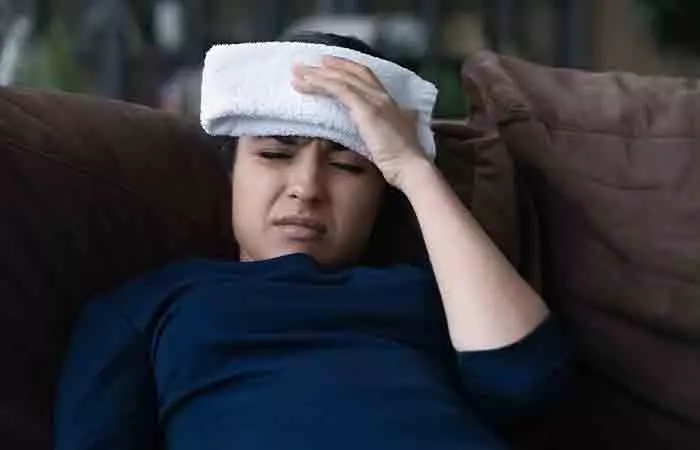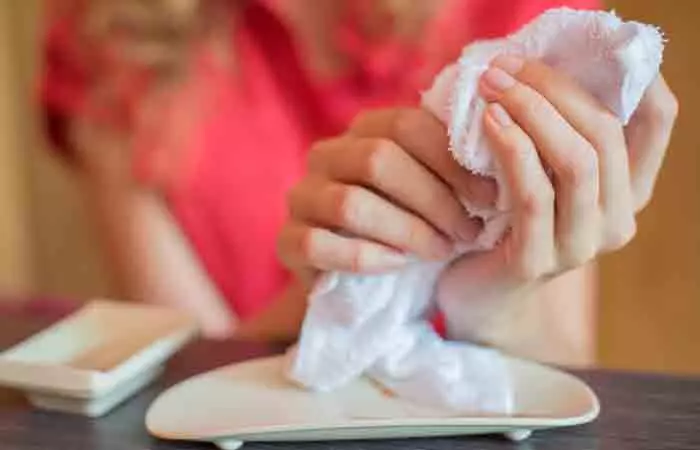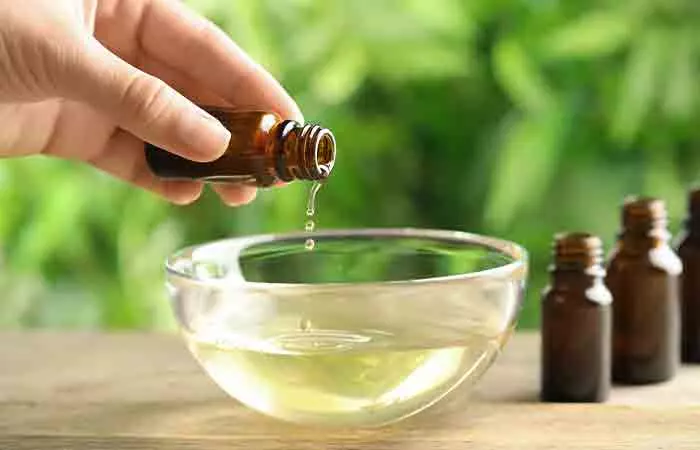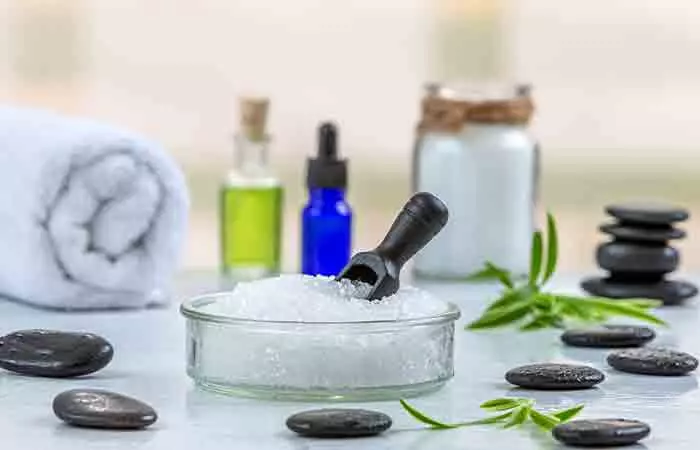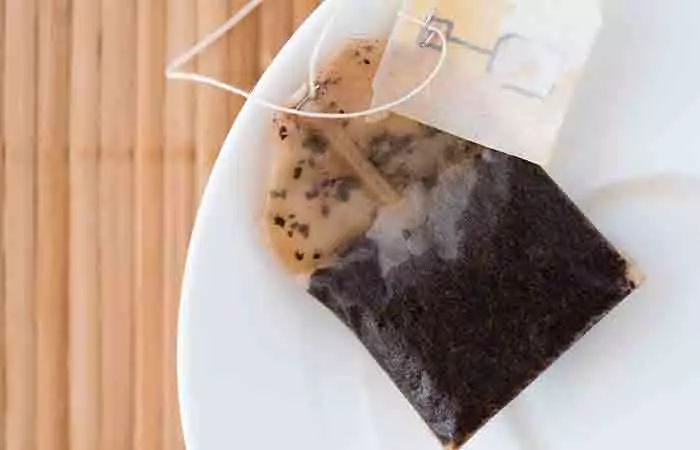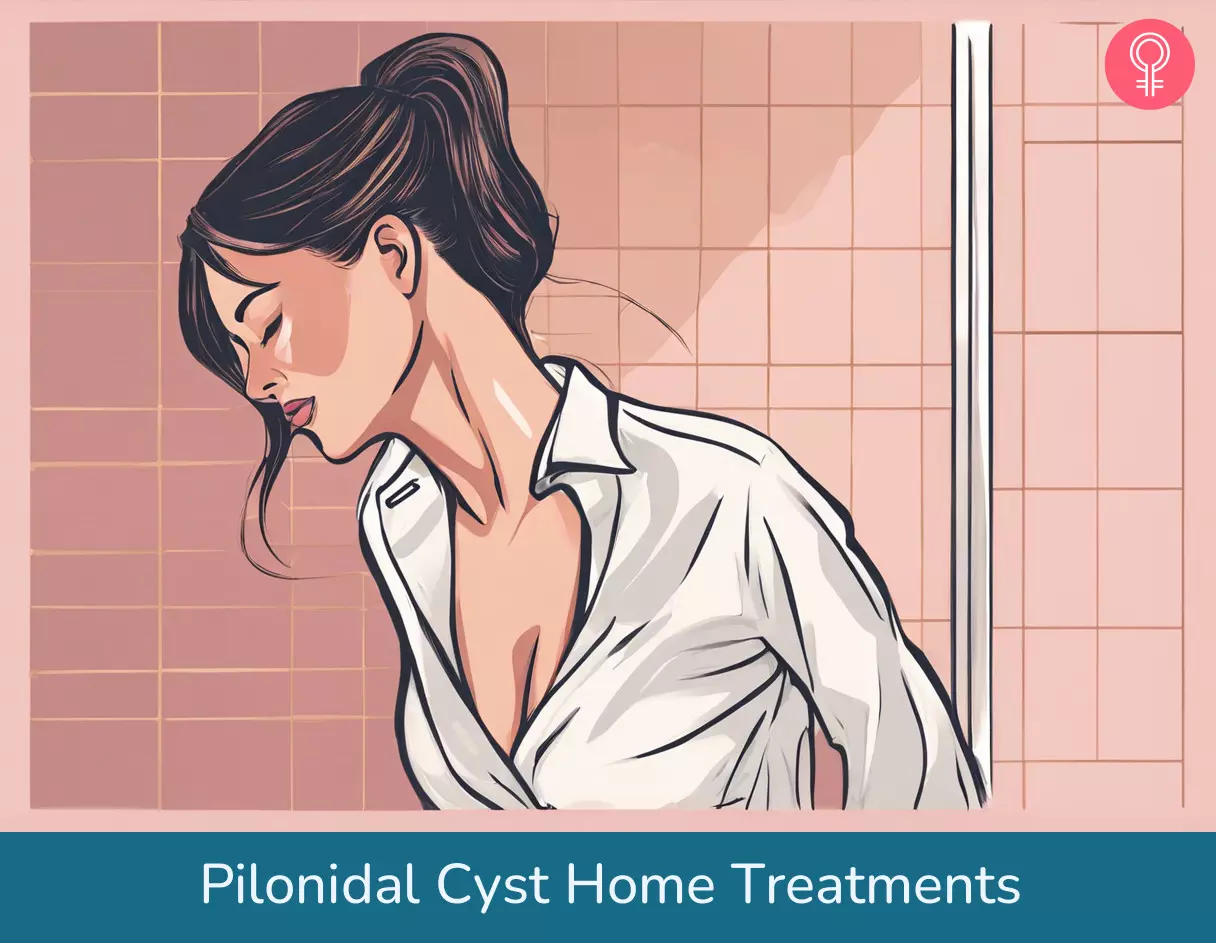Who Can Get Pilonidal Cysts?
The following factors can increase the chances of developing pilonidal cysts:
A family history of pilonidal cysts Men with a deep natal cleft You sit around for extended periods (some amount of friction can cause a reaction to ingrown hair) You have thick body hair
Let’s look at the causes and symptoms in detail.
What Causes Pilonidal Cysts?
The main cause of pilonidal cysts is the presence of ingrown hair. This happens as a result of hair becoming embedded in the skin. If the cyst gets infected, it can form a painful abscess. Individuals between the ages of 20 and 30 are susceptible to pilonidal cysts. Listed below are the factors that may contribute to the development of pilonidal cysts:
Gender: Men are more likely to have pilonidal cysts. Sedentary lifestyle Lack of physical activity or exercise Excess body hair Poor hygiene Excessive sweating
Symptoms Of Pilonidal Cyst
The common symptoms of pilonidal cyst development include inflamed skin, collection of pus, and/or slight bleeding at the site of infection. One may also experience pain and discomfort while sitting or standing. However, if the infection is acute, one may also have a fever or nausea. Bikash Paneru, a blogger, shared his experience about his pilonidal cyst in his personal blog. He said, “I began to feel discomfort while sitting down during work. It was then that I noticed that there was a cyst on my left glute (i).” You may be tempted to pop these cysts to relieve the discomfort. However, doing so increases the risk of infection and scarring. Hence, it is best to consult a doctor.
Medical Treatment
The doctor performs a simple procedure to drain the cyst. They will numb the affected area and make a small incision to drain the cyst. Once all the fluid and debris are drained, they will either close the wound with a sterile gauze or stitches. They may also prescribe antibiotics to prevent infection. However, if these cysts reappear, you may need surgery. Note: Consult a healthcare provider immediately if you experience continued discomfort or notice any infection-related symptoms, like increased redness, warmth, or pus. Bikash Paneru further elaborated how surgery successfully removed the pilonidal cyst. However, it was the post-surgery period that was more challenging than the surgery itself. He said, “The post operation experience was interesting. It was difficult to sit down for long periods so I had to alternate between sitting, standing up and lying down in the prone position for almost a week.” Here are a few home remedies you can try out to reduce the pain and discomfort.
13 Effective Home Remedies For Pilonidal Cysts
1. Warm Compress
Using a hot compress a few times a day can help soothe the inflammation (2). The heat from the washcloth enables the cyst to drain the pus, thus relieving pain. It is an excellent home care treatment option. You Will Need
1 sterile washcloth A bucket of warm water
What You Have To Do How Often You Should Do This Repeat as needed until the pain subsides.
2. Garlic
Garlic has antibiotic and antimicrobial properties (3). Hence, it may prove to be effective in reducing the symptoms of pilonidal cysts by consumption or a topical treatment. You Will Need A few cloves of garlic What You Have To Do There are two ways to use garlic: How Often You Should Do This Applying garlic: Once a day for a few days. Ingesting garlic: 2-3 times a day.
3. Tea Tree Oil
Tea tree oil possesses antimicrobial and anti-inflammatory properties (4). These properties of this particular essential oil may help reduce inflammation and prevent further infection, thus promoting faster healing of the cyst. You Will Need
A few drops of tea tree oil Warm water
What You Have To Do How Often You Should Do This Repeat 2-3 times daily.
4. Castor Oil
Castor oil contains ricinoleic acid, which possesses anti-inflammatory properties (5). This may help alleviate inflammation around the pilonidal cyst. You Will Need
A few drops of castor oil Cotton ball
What You Have To Do How Often You Should Do This Repeat 2-3 times daily.
5. Coconut Oil
Coconut oil is both anti-inflammatory and analgesic (6). It can thus help reduce pain and inflammation in the affected area. You Will Need ½ teaspoon of organic coconut oil What You Have To Do How Often You Should Do This Repeat 2 times daily.
6. Epsom Salt
The magnesium in Epsom salt can help reduce inflammation (7). Epsom salt baths may not only reduce pain but also promote the expulsion of pus from the cyst. You Will Need 1 cup of Epsom salt What You Have To Do How Often You Should Do This Repeat as necessary.
7. Apple Cider Vinegar
Apple cider vinegar has antimicrobial properties (8). Hence, it may help prevent the pilonidal cyst from getting infected, thereby assisting in its healing. You Will Need
Apple cider vinegar Cotton ball
What You Have To Do How Often You Should Do This Repeat 2 times daily.
8. Turmeric
Turmeric contains curcumin that helps reduce inflammation and relieves pain in the affected area (9). You Will Need 1 tablespoon turmeric powder What You Have To Do How Often You Should Do This Repeat 2 times daily.
9. Black Tea Bag
The anti-inflammatory properties of black tea may help in treating the swelling and inflammation in the affected area (10). You Will Need 1 black tea bag What You Have To Do How Often You Should Do This Repeat this procedure 3-4 times daily.
10. Aloe Vera
Aloe vera exhibits anti-inflammatory and antimicrobial properties (11). Both these properties can help in reducing the pain and irritation caused due to pilonidal cysts. You Will Need Aloe vera gel What You Have To Do How Often You Should Do This Repeat 3-4 times in a day
11. Fenugreek
A novel fenugreek extract was observed to reduce cyst size and volume in patients with polycystic ovary syndrome (12). Hence, it may similarly help treat a pilonidal cyst. You Will Need
1 teaspoon of fenugreek seeds A glass of boiling water
What You Have To Do How Often You Should Do This Consume once daily until your symptoms show improvement.
12. Burdock Root
Burdock root is an excellent herbal remedy for several skin infections (13). This alternative therapy works because burdock root contains active compounds that flush out toxins from the body and may also help in alleviating the symptoms of pilonidal cysts. You Will Need
½ teaspoon dried burdock root powder 1 tablespoon honey
What You Have To Do How Often You Should Do This Repeat this 2-3 times daily.
13. Onion
Onion possesses antimicrobial properties against a host of bacteria (14). This makes it suitable to treat an infected pilonidal cyst. You Will Need A thick slice of onion What You Have To Do How Often You Should Do This Repeat this procedure every 2-3 hours by changing the onion slices. Caution: Onion can sometimes irritate the skin. Do a patch test before trying this remedy. Following and repeating these remedies as necessary may ensure a reduction in pain and inflammation. Prevention is better than cure and keeping a few key things in mind may help you avoid this condition. Learn more about it in the next section.
Prevention Of Pilonidal Cyst
Preventing pilonidal cysts primarily involves maintaining good hygiene and making lifestyle choices that reduce the risk of developing them.
Practice proper personal hygiene. Cleanse your lower body regularly with mild soap and water. Ensure the affected area is kept clean and dry to prevent bacterial growth. Shave or wax the area around the tailbone to potentially reduce the risk of hair entering and getting trapped in the pilonidal sinus Avoid prolonged sitting or activities that cause excessive friction in the lower back region. Maintain a healthy body weight. Exercise regularly Avoid wearing tight-fitting clothing. Consult a healthcare professional if you have a family history of pilonidal cysts or recurring issues.
How long do pilonidal cysts last? Check out the infographic below to find the 10 simplest home remedies you can use at a moment’s notice.Illustration: StyleCraze Design Team After the diagnosis of a pilonidal cyst and subsequent cyst removal surgery, the wound will require 1-2 months to heal. However, in the case of complex or recurrent pilonidal disease, it may take up to 6 months to heal. Why do pilonidal cysts come back? It has been observed that it can be hard to remove the entire cyst. This would mean that there is a chance that it can recur. Why do pilonidal cysts have a foul smell? The cyst may be infected if it has a foul odor. This infection may cause the build-up of pus or blood. Can a pilonidal cyst kill you? Very often, pilonidal cysts can be removed with surgery. However, there is the possibility of the recurrence of abscesses. This happens if extensive scar tissue or sinus formation occurs. How can I prevent the development of pilonidal cysts? Here are the ways you may prevent the development of pilonidal cysts:
Avoid being sedentary. If your job requires you to sit for long periods at a stretch, remember to stand up at regular intervals and take a quick walk. Watch your weight. Being overweight can make you susceptible to developing pilonidal cysts. Maintain hygiene in the area between the cheeks of your buttocks.
Will a pilonidal cyst burst on its own? In some cases, a pilonidal cyst may burst on its own or release pus and drain out slowly over a period of time. However, the process may take a long time or be painful and uncomfortable. It is better to get a pilonidal cyst treated, either with home remedies or medical/surgical intervention. Can you put hydrogen peroxide on a pilonidal cyst? While there is no evidence to suggest the efficacy of using hydrogen peroxide on a pilonidal cyst, 3% hydrogen peroxide may facilitate the healing of an open pilonidal cyst wound after it has been drained (15).
Illustration: Pilonidal Cyst Home Treatments
